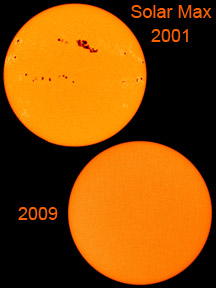There were lots of sunspots at solar max in 2001. During the "deep" solar min that followed sunspots were very rare for several years.
Click on image for full size
Images courtesy of SOHO/NASA/ESA.
Where have all the sunspots gone?
The Sun is missing its spots! Sunspots, that is. Most of the time there are at least a few sunspots on the Sun. Sometimes there are lots of sunspots. Scientists call those times "solar max". Other times there are fewer sunspots. Those times are called "solar min". Normally sunspots come and go in a cycle that lasts about 11 years.
Between 2007 and 2009 there was a solar min. Normally during solar min there are still some sunspots. There were hardly any sunspots at all between 2007 and 2009. This solar min has also lasted longer than normal.
Why are scientists interested in this unusual sunspot minimum? Sunspots tell us a lot about how active the Sun is. When the Sun has lots of spots, its magnetic field is all scrambled up. It gives off more radiation, especially the high-energy and dangerous X-rays and ultraviolet (UV) radiation. Explosions on the Sun - solar flares and coronal mass ejections - happen more often. Those explosions can cause space weather "storms" all over our Solar System. When the Sun is calm and has few spots, there is less radiation and fewer explosions that cause space weather storms.
Scientists wonder what will happen next. What does this extreme sunspot minimum mean for the future? Will the next sunspot max have fewer sunspots, or more? Or will it be an average solar max with a normal number of sunspots? We'll just have to wait and see!
You might also be interested in:
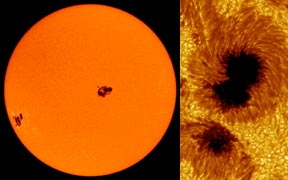
Sunspots are dark spots on the Sun. They may look small, but they are actually as bigas a planet like Earth or Mars! Sunspots are "dark" because they are colder than the areas around them. Of course, they
...more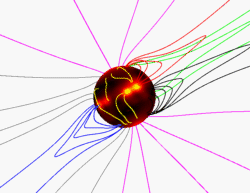
Text for this level has not been written yet. Please see the "Intermediate" text for this page if you want to learn about this topic. To get to the "Intermediate" text, click on the blue "Intermediate"
...more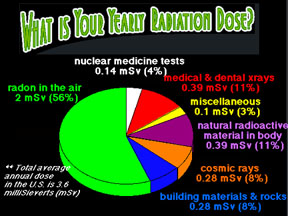
The text for this level hasn't been written yet. Please check the "Intermediate" or "Advanced" level of this page (click on the bar near the top of this page).
...more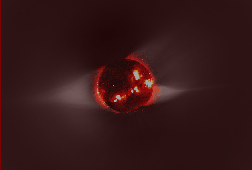
Rising above the Sun's chromosphere , the temperature jumps sharply from a few tens of thousands of kelvins to as much as a few million kelvins in the Sun's outer atmosphere, the solar corona. Understanding
...more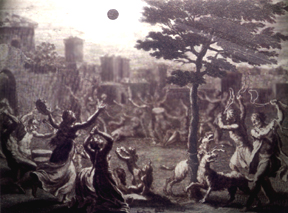
Solar eclipses are really great to watch! But in the past, people were very scared of them. They didn't understand what was going on. Some people thought that a monster or animal was eating the Sun! They
...more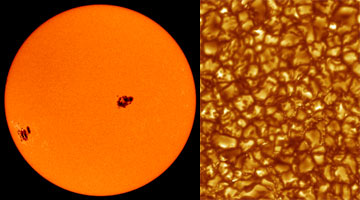
Most of the energy we receive from the Sun is the visible (white) light emitted from the photosphere. The photosphere is one of the coolest regions of the Sun (6000 K), so only a small fraction (0.1%)
...more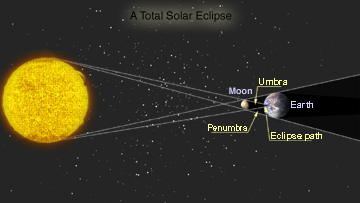
An eclipse of the Sun occurs when the Earth passes through the moon's shadow. A total eclipse of the Sun takes place when the Moon is directly between the Sun and the Earth. When a total eclipse does
...more


